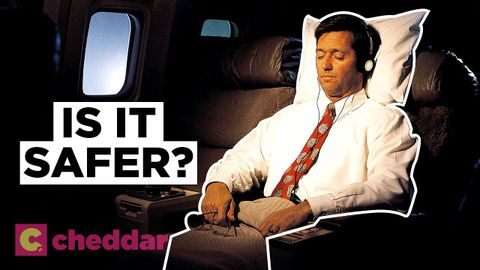為什麼飛機起降時要關燈呢? (Why Planes Turn Lights Off For Takeoff & Landing - Cheddar Explores)
Seraya 發佈於 2020 年 03 月 08 日  沒有此條件下的單字
沒有此條件下的單字US /ˈkruʃəl/
・
UK /'kru:ʃl/
US /ˈkɑnˌtɛnt/
・
UK /'kɒntent/
- adj.滿足的;滿意的
- n. (c./u.)內容;主題;內容;滿意;內容 (數位);含量
- v.t.使…滿足
- v.i.同意
US /ˈmʌltəpəl/
・
UK /ˈmʌltɪpl/
- adj.多重的;多種的;多發性的;多重的
- n. (c.)多;多個的;乘數
- pron.多重的
